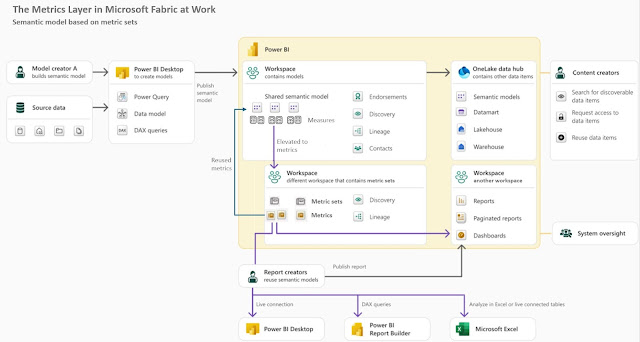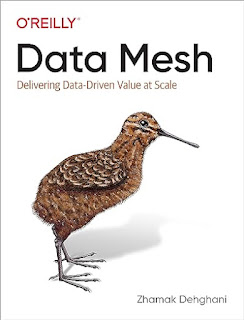"A domain model is not a particular diagram; it is the idea that the diagram is intended to convey. It is not just the knowledge in a domain expert’s head; it is a rigorously organized and selective abstraction of that knowledge." (Eric Evans, "Domain-Driven Design: Tackling complexity in the heart of software", 2003)
"Always remember that the model is not the diagram. The diagram’s purpose is to help communicate and explain the model. The code can serve as a repository of the details of the design." (Eric Evans, "Domain-Driven Design: Tackling complexity in the heart of software", 2003)
"But code as a design document does have its limits. It can overwhelm the reader with detail. Although its behavior is unambiguous, that doesn’t mean it is obvious. And the meaning behind a behavior can be hard to convey. […] A document shouldn’t try to do what the code already does well. The code already supplies the detail. It is an exact specification of program behavior. Other documents need to illuminate meaning, to give insight into large-scale structures, and to focus attention on core elements. Documents can clarify design intent when the programming language does not support a straightforward implementation of a concept. Written documents should complement the code and the talking." (Eric Evans, "Domain-Driven Design: Tackling complexity in the heart of software", 2003)
"Diagrams are a means of communication and explanation, and they facilitate brainstorming. They serve these ends best if they are minimal. Comprehensive diagrams of the entire object model fail to communicate or explain; they overwhelm the reader with detail and they lack meaning." (Eric Evans, "Domain-Driven Design: Tackling complexity in the heart of software", 2003)
"Domain-driven design is both a way of thinking and a set of priorities, aimed at accelerating software projects that have to deal with complicated domains." (Eric Evans, "Domain-Driven Design: Tackling complexity in the heart of software", 2003)
"Domain experts are usually not aware of how complex their mental processes are as, in the course of their work, they navigate all these rules, reconcile contradictions, and fill in gaps with common sense. Software can’t do this. It is through knowledge crunching in close collaboration with software experts that the rules are clarified, fleshed out, reconciled, or placed out of scope." (Eric Evans, "Domain-Driven Design: Tackling complexity in the heart of software", 2003)
"Effective domain modelers are knowledge crunchers. They take a torrent of information and probe for the relevant trickle. They try one organizing idea after another, searching for the simple view that makes sense of the mass. Many models are tried and rejected or transformed. Success comes in an emerging set of abstract concepts that makes sense of all the detail. This distillation is a rigorous expression of the particular knowledge that has been found most relevant." (Eric Evans, "Domain-Driven Design: Tackling complexity in the heart of software", 2003)
"Extreme Programming recognizes the importance of design decisions, but it strongly resists upfront design. Instead, it puts an admirable effort into communication and improving the project’s ability to change course rapidly. With that ability to react, developers can use the “simplest thing that could work” at any stage of a project and then continuously refactor, making many small design improvements, ultimately arriving at a design that fits the customer’s true needs." (Eric Evans, "Domain-Driven Design: Tackling complexity in the heart of software", 2003)
"Continuous refactoring is a series of small redesigns; developers without solid design principles will produce a code base that is hard to understand or change—the opposite of agility. And although fear of unanticipated requirements often leads to overengineering, the attempt to avoid overengineering can develop into another fear: a fear of doing any deep design thinking at all." (Eric Evans, "Domain-Driven Design: Tackling complexity in the heart of software", 2003)
"If the architecture isolates the domain-related code in a way that allows a cohesive domain design loosely coupled to the rest of the system, then that architecture can probably support domain-driven DESIGN." (Eric Evans, "Domain-Driven Design: Tackling complexity in the heart of software", 2003)
"If the design, or some central part of it, does not map to the domain model, that model is of little value, and the correctness of the software is suspect. At the same time, complex mappings between models and design functions are difficult to understand and, in practice, impossible to maintain as the design changes. A deadly divide opens between analysis and design so that insight gained in each of those activities does not feed into the other." (Eric Evans, "Domain-Driven Design: Tackling complexity in the heart of software", 2003)
"In fact, XP works best for developers with a sharp design sense. The XP process assumes that you can improve a design by refactoring, and that you will do this often and rapidly. But past design choices make refactoring itself either easier or harder. The XP process attempts to increase team communication, but model and design choices clarify or confuse communication." (Eric Evans, "Domain-Driven Design: Tackling complexity in the heart of software", 2003)
"Knowledge crunching is an exploration, and you can’t know where you will end up." (Eric Evans, "Domain-Driven Design: Tackling complexity in the heart of software", 2003)
"Many objects are not fundamentally defined by their attributes, but rather by a thread of continuity and identity." (Eric Evans, "Domain-Driven Design: Tackling complexity in the heart of software", 2003)
"Many things can put a project off course: bureaucracy, unclear objectives, and lack of resources, to name a few. But it is the approach to design that largely determines how complex software can become. When complexity gets out of hand, developers can no longer understand the software well enough to change or extend it easily and safely. On the other hand, a good design can create opportunities to exploit those complex features." (Eric Evans, "Domain-Driven Design: Tackling complexity in the heart of software", 2003)
"Maps are models, and every model represents some aspect of reality or an idea that is of interest. A model is a simplification. It is an interpretation of reality that abstracts the aspects relevant to solving the problem at hand and ignores extraneous detail." (Eric Evans, "Domain-Driven Design: Tackling complexity in the heart of software", 2003)
"Models come in many varieties and serve many roles, even those restricted to the context of a software development project. Domain-driven design calls for a model that doesn’t just aid early analysis but is the very foundation of the design […] Tightly relating the code to an underlying model gives the code meaning and makes the model relevant." (Eric Evans, "Domain-Driven Design: Tackling complexity in the heart of software", 2003)
"Software design is a constant battle with complexity." (Eric Evans, "Domain-Driven Design: Tackling complexity in the heart of software", 2003)
"The effectiveness of an overall design is very sensitive to the quality and consistency of fine-grained design and implementation decisions. With a MODEL-DRIVEN DESIGN, a portion of the code is an expression of the model; changing that code changes the model. Programmers are modelers, whether anyone likes it or not. So it is better to set up the project so that the programmers do good modeling work." (Eric Evans, "Domain-Driven Design: Tackling complexity in the heart of software", 2003)
"The technical model that drives the software development process must be strictly pared down to the necessary minimum to fulfill its functions. An explanatory model can include aspects of the domain that provide context that clarifies the more narrowly scoped model. Explanatory models offer the freedom to create much more communicative styles tailored to a particular topic. Visual metaphors used by the domain experts in a field often present clearer explanations, educating developers and harmonizing experts. Explanatory models also present the domain in a way that is simply different, and multiple, diverse explanations help people learn." (Eric Evans, "Domain-Driven Design: Tackling complexity in the heart of software", 2003)
"To create software that is valuably involved in users' activities, a development team must bring to bear a body of knowledge related to those activities. The breadth of knowledge required can be daunting. The volume and complexity of information can be overwhelming. Models are tools for grappling with this overload. A model is a selectively simplified and consciously structured form of knowledge. An appropriate model makes sense of information and focuses it on a problem." (Eric Evans, "Domain-Driven Design: Tackling complexity in the heart of software", 2003)
"Useful models seldom lie on the surface. As we come to understand the domain and the needs of the application, we usually discard superficial model elements that seemed important in the beginning, or we shift their perspective. Subtle abstractions emerge that would not have occurred to us at the outset but that pierce to the heart of the matter." (Eric Evans, "Domain-Driven Design: Tackling complexity in the heart of software", 2003)
"Well-written code can be very communicative, but the message it communicates is not guaranteed to be accurate. Oh, the reality of the behavior caused by a section of code is inescapable. But a method name can be ambiguous, misleading, or out of date compared to the internals of the method. The assertions in a test are rigorous, but the story told by variable names and the organization of the code is not. Good programming style keeps this connection as direct as possible, but it is still an exercise in self-discipline. It takes fastidiousness to write code that doesn’t just do the right thing but also says the right thing." (Eric Evans, "Domain-Driven Design: Tackling complexity in the heart of software", 2003)
"When a design is based on a model that reflects the basic concerns of the users and domain experts, the bones of the design can BE revealed to the user to a greater extent than with other design approaches. Revealing the model gives the user more access to the potential of the software and yields consistent, predictable behavior." (Eric Evans, "Domain-Driven Design: Tackling complexity in the heart of software", 2003)
"When we set out to write software, we never know enough. Knowledge on the project is fragmented, scattered among many people and documents, and it’s mixed with other information so that we don’t even know which bits of knowledge we really need. Domains that seem less technically daunting can be deceiving: we don’t realize how much we don’t know. This ignorance leads us to make false assumptions." (Eric Evans, "Domain-Driven Design: Tackling complexity in the heart of software", 2003)












